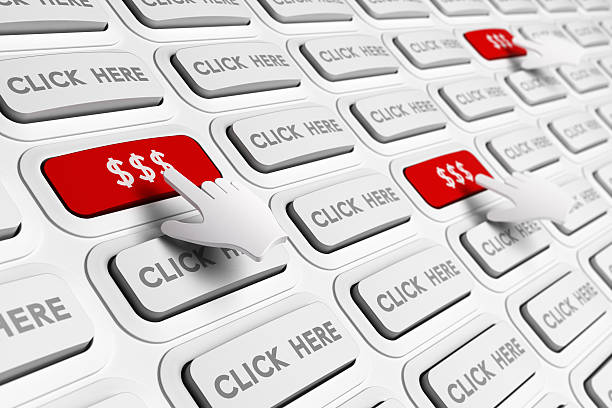Facebook ads and boosted posts are two of the most powerful tools in your Facebook marketing arsenal. I often find myself using them together to get the best results. But how can you tell which one to use on any given day? And more importantly: when should you use one over another?
Boosted Posts
Boosted posts are a great way to get more engagement and reach on Facebook. They’re free, but you have to pay for them (you set what you’re willing to spend).
There’s no guarantee that your boosted posts will be seen by all of your followers, so it’s essential to make sure they’re engaging enough before paying for them.
What is a boosted post?
A boosted post is a paid ad. The main difference between boosted posts and ads is that the former is only visible to people who are following you, while the latter can be targeted to specific groups of people.
You can use boosts to promote any type of post: text-only, image-only, video, or link. You can also target your followers by location (country) or interest (topic). Boosted posts will appear in the newsfeeds of anyone who isn’t already following you; this means that if someone is not a friend but likes what they see on Facebook, they may choose to follow you.
When to use a boosted post?
If you want to get more reach and engagement on a post, boosted posts can be a great way to do that. They let you pay to promote your content on Facebook, so it’s seen by more people who are likely interested in it—potentially exposing your work to new audiences and building an even bigger audience for the future.
Boosted posts are also ideal when you have a limited budget for marketing. You can promote one or two posts per week instead of paying for ads all the time, which can save money over time since Facebook ads tend to be more expensive than boosted posts.
Paid ads
A paid ad is the most targeted form of advertising. You can choose to target users based on specific interests, locations, demographics, and even devices. This provides you with a deep level of control.
What are paid ads?
Paid ads are a way to get your content in front of more people. Instead of relying on word-of-mouth or brand recognition, paid ads to allow you to be seen by people who have already expressed an interest in the topic or product you’re promoting. This can help you reach a wider audience and boost engagement.
Paid ads also make it easier for you to target specific groups of people based on factors like location, age, interests, and other demographic information. You can even choose between targeting specific gender or age groups if you want—for example, if you’re selling men’s underwear on Lazada but want to target women instead.
Why should I use paid ads?
Paid ads are more targeted and can be more cost-effective.
The main reason to use paid ads is that they’re more targeted than boosted posts. You have a much better idea of who your target audience is and what they care about, so you don’t need to waste money targeting users who aren’t interested in what you have to offer. Using Facebook’s Ads Manager, you can make sure that the people seeing your ad want to see it (and therefore convert).
You may also find that paid ads are cheaper than boosted posts—especially if you create multiple ads for different goals (like driving traffic to your website or landing page). This might seem counterintuitive since promoted posts include one-click purchasing options like ‘Shop Now’ (for retail businesses) or ‘Book Now’ (for travel businesses), but there are several reasons why this could be true:
You have more control over where your budget goes with paid advertising as opposed to boosted post-organic reach (which is completely dependent on organic engagement) – meaning that even if the majority of impressions come from non-relevant users, these users aren’t costing as much because they’re not clicking on any buttons that would increase their value per click (VPC). Since VPC is based solely on clicks from relevant visitors and not impressions from non-relevant visitors, it’s easier for paid ads with less-than-ideal targeting parameters still end up being cheaper overall without sacrificing quality traffic volume.
When should I use paid ads?
Paid ads are a great way to drive traffic to a specific page. You can use them to send people straight to a landing page, blog post, product page, or whatever you’d like.
However, I don’t recommend using paid advertising as your primary strategy for driving traffic around the web. Paid ads can be expensive and cannibalize your organic reach if you’re not careful where and how often you use them. If you have limited funds that need to be spent wisely, focusing on building engaged audiences through Facebook Groups is usually a better bet than spending it all on expensive paid ads.
Key Differences
If you’re using boosted posts for your ads, this means that you’re targeting a wider audience with a general post about your business (like our example).
On the other hand, if you’re paying for an ad directly through Facebook or Instagram, then it will be served to people who match your chosen criteria (such as location) but won’t reach anyone outside that particular audience segment unless they happen upon one of their friends’ posts from within their network (your friend may have liked or commented on it).
Wrap Up
When it comes to boosting posts on Facebook, the key is to think about what you want to accomplish with your post and the audience you’re trying to reach. That way, you can decide whether or not you need a boosted post or paid ads (or both). If you’re just looking for more engagement and reach on Facebook, then boosting will do the trick! But if your goal is something more specific like driving traffic to your landing page or blog, then an ad campaign may be better suited–and could help save money in the long run by offering high-quality leads at a lower cost per lead than any other marketing channel available today.
Now It’s Your Turn!
What do you think?
Boosted Posts or Paid Ads? Which is right for your business?
If you’re still unsure, we can help! We at EXP Digital Marketing are happy to discuss the pros and cons of each option. If you have any questions, please don’t hesitate to reach out.
We’re looking forward to hearing from you! Good luck and happy business!


